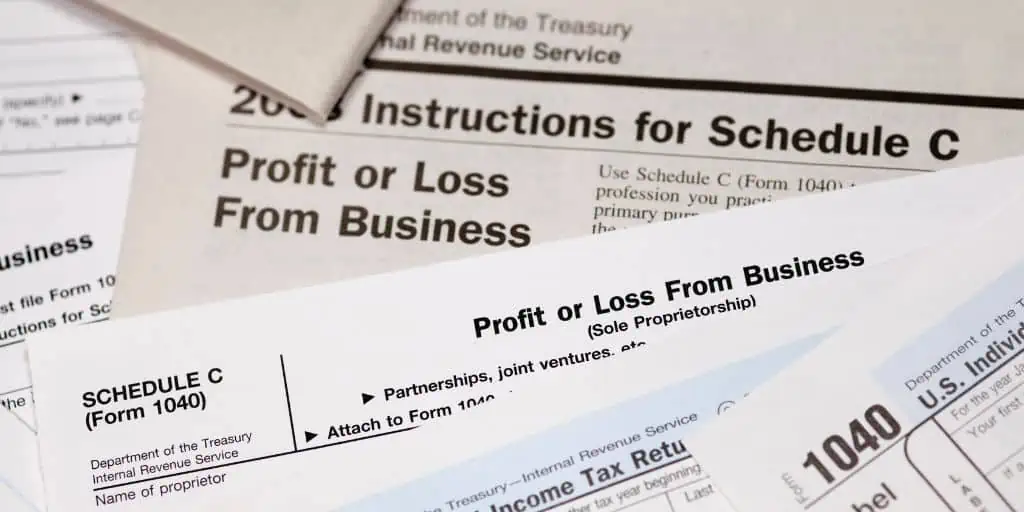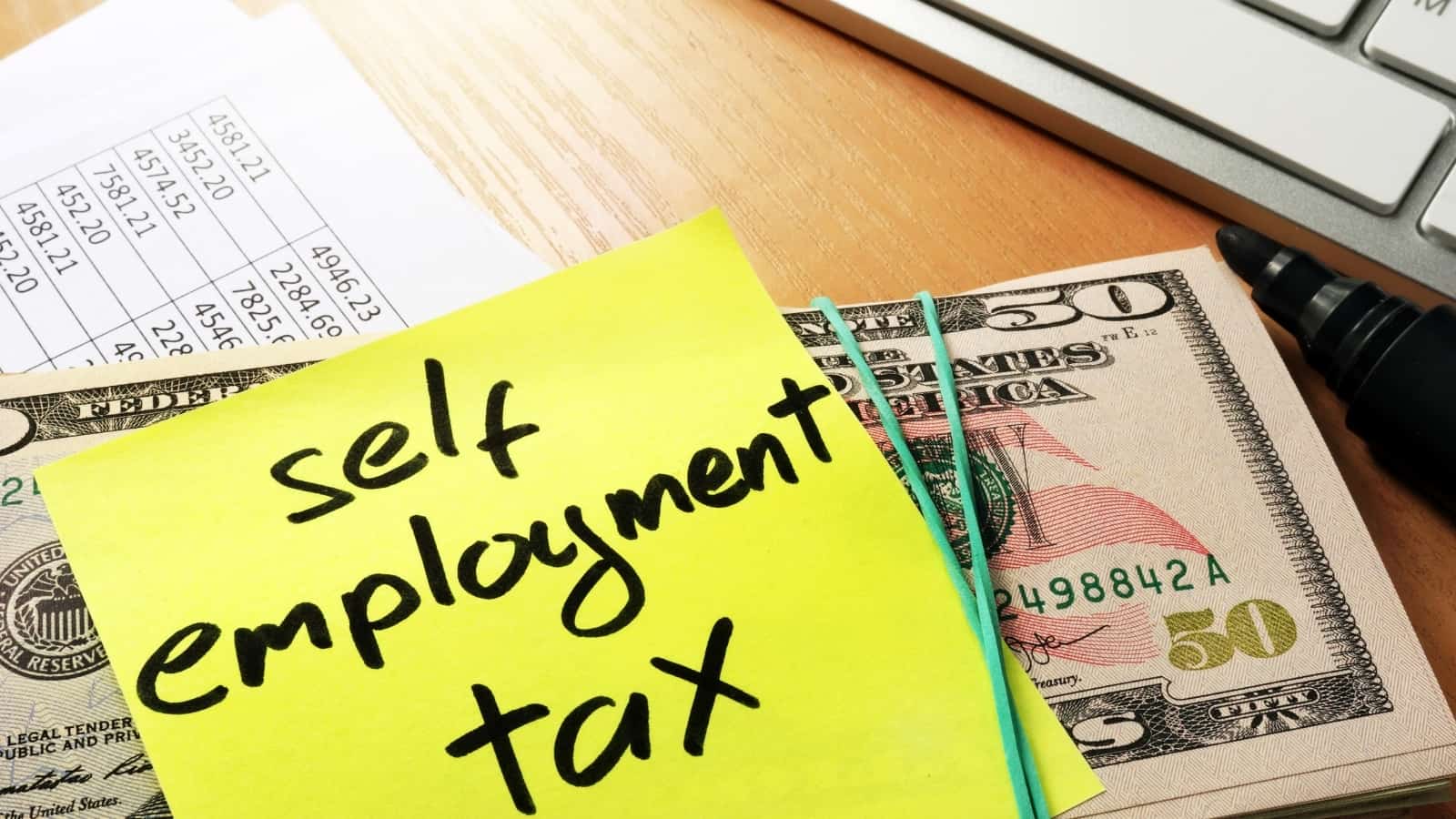What Is Schedule C?
REtipster does not provide tax, investment, or financial advice. Always seek the help of a licensed financial professional before taking action.
Shortcuts
- Schedule C is a tax form that reports profit or loss from a business to the Internal Revenue Service.
- Self-employed individuals, such as owners of sole proprietorships and single-member LLCs, freelance workers, and independent contractors, generally use Schedule C regardless of whether a profit or loss is recorded for the tax year.
- Most business expenses can be reported on Schedule C.
- Schedule C differs from Form 1099, although one may have to report its contents on Form 1099.
Who Needs to File Schedule C?
Primarily, taxpayers operating sole proprietorships and single-member limited liability companies (LLCs)[1] use Schedule C. Essentially, this tax form caters to self-employed individuals such as freelancers, independent contractors, and small business owners.
Schedule C does not apply to C corporations and S corporations[2] but to individuals who include all their business profits in their personal tax returns.
However, even individuals employed by a company may need to file Schedule C if they have side gigs or freelance work in addition to their full-time job. An example is traditional employees with a part-time land-flipping business who must submit Schedule C before the tax deadline[3].
A person engaging in multiple side hustles or who owns several businesses should complete a separate Schedule C for each business or gig when filing Form 1040[4]. This reasoning also applies to a taxpayer with several businesses.
Examples of Schedule C Expenses
Schedule C includes dedicated fields for these expenses:
- Advertising.
- Car and truck expenses.
- Commissions and fees.
- Contract labor.
- Depreciation and Section 179 expense deduction.
- Employee benefit programs.
- Insurance (not for health).
- Interest.
- Mortgage paid to banks or other types of creditors.
- Legal and professional services.
- Office expense.
- Pension and profit-sharing plans.
- Rented or leased vehicles, machinery, equipment, and/or other business property.
- Repairs and maintenance.
- Supplies.
- Taxes and licenses.
- Travel and deductible meals.
- Utilities.
- Wages (less employment credits).
Applicable Deductions
Determining applicable deductions can be challenging due to the many qualifying scenarios. Generally, the costs that directly affect the part of the house used for business are almost always fully deductible.
This encompasses home office write-offs, which represent a portion of housing expenses equal to the area of the house regularly and solely used for business.
For instance, if taxpayers allocate 15% of their home’s total area for work, they can deduct 15% of their housing expenses, such as rent and utility costs, for the tax year.
Only self-employed individuals and certain qualifying employees can leverage home office tax deductions. This means most employees who exclusively work from home cannot access these tax perks[5].
Additionally, some expenses, such as car- and truck-related ones, demand more information, given the requirement of gasoline consumption for business purposes. This write-off is calculated using the standard mileage rate, subject to annual review by the IRS. If the taxpayer gets audited, presenting a mileage log[6] is required.
Lastly, Schedule C offers a separate space for any tax deductions that fall outside the provided categories.
Is a Schedule C Necessary?
REtipster features products and services we find useful. If you buy something through the links below, we may receive a referral fee, which helps support our work. Learn more.
A business that generates a profit or loss in a tax year requires a Schedule C. If a business experiences no profit or loss, there may be no need to file this tax form for that year[7]—that’s why it’s called a “Profit or Loss from Business Form.” (Note that it’s always recommended to consult a tax professional regarding your specific circumstances.)
Moreover, even inactive businesses that receive payments must file a Schedule C to report this activity to the IRS.
For completing Schedule C, several documents provide crucial information[8]:
- The income statement (otherwise known as the profit and loss statement). This statement details the business’s income and costs for the whole year.
- The year’s balance sheet, which may end on the 31st of December for businesses that follow a calendar year, illustrating the business’s total assets, liabilities, and equity.
- Statements showing when assets are purchased during the year.
- Inventory records to calculate the cost of goods sold when the business sells products.
Taxpayers can also reference other documents to validate the legitimacy of their claimed business expense write-offs.
Schedule C vs. Form 1099
Although both Schedule C and Form 1099 track income for self-employed individuals, they fulfill different roles. Schedule C reports business income and expenses, while Form 1099 shows various income earned by self-employed individuals.
In other words, Schedule C computes a business’s net profit or loss, while Form 1099 (including its sub-forms) reports non-employment income—like dividends, contract-based worker payments, and unemployment benefits—that reach a minimum of $600 in a tax year.
In addition to earnings, items such as fees, benefits, royalties, and commissions also count as non-employment income.
RELATED: What the Heck is “IRS Form 1099-S” and Why Does it Matter?
However, most types of income reported on Form 1099 must be included in Schedule C.
Typically, the payor completes Form 1099 and sends duplicates to the IRS and the payee, though the timing of receipt may vary between the two.
Receiving Form 1099 earlier allows the payee to spot and correct errors before the same document reaches the tax authority. However, if the payee fails to receive a copy before the deadline (usually January 31st), they are still liable for reporting and paying taxes on that income. This implies that the payee is liable for tax, regardless of whether Form 1099 arrives late or not at all.
Even if the payor didn’t file it, payees who fail to receive an expected 1099 form should report it to the IRS as business income on Schedule C.
Form 1099-NEC
Form 1099-NEC, one of the many variants of Form 1099[9], is used specifically for reporting non-employee compensation[10]. Before the tax year 2020, businesses reported this income using Form 1099-MISC.
A non-employee earning less than $600 from a single client for services provided to that client will not receive a 1099-NEC from that client but should still report the income on Schedule C.
Sources
- Peluso, B. (2022, November 1.) LLC vs. sole proprietorship. LegalZoom. Retrieved from https://www.legalzoom.com/articles/llc-vs-sole-proprietorship
- C Corp vs S Corp. (2022, June 13.) Mailchimp. Retrieved from https://mailchimp.com/resources/c-corp-vs-s-corp/
- Linsell, C. (2022, November 3.) Can You Be a Part-time Real Estate Agent? The Close. Retrieved from https://theclose.com/part-time-real-estate-agent/
- Kibet, L. (2022, November 16.) Form 1040: What it is, how it works, and the different types to know about. Insider. Retrieved from https://www.businessinsider.com/personal-finance/what-is-form-1040
- Orem, T. (2023, January 18.) 15 Self-Employment Tax Deductions in 2023. NerdWallet. Retrieved from https://www.nerdwallet.com/article/taxes/self-employment-tax-deductions
- How to Claim the Standard Mileage Deduction. (n.d.) Get It Back. Retrieved from https://www.taxoutreach.org/rideshare/how-to-claim-the-standard-mileage-deduction/
- Schedule C & Schedule SE 2. (2022, September 6.) United States Internal Revenue Service. Retrieved from https://www.irs.gov/faqs/small-business-self-employed-other-business/schedule-c-schedule-se/schedule-c-schedule-se-2
- Murray, J. (2023, January 4.) What You Need to Know to File Schedule C. The Balance. Retrieved from https://www.thebalancemoney.com/what-do-i-need-to-know-to-file-schedule-c-398788
- Fishman, S. (2015, February 20.) How Many 1099 Forms Are There? Nolo. Retrieved from https://www.nolo.com/legal-encyclopedia/how-many-1099-forms-are-there.html
- Smith, A. (2016, October 26.) What Is Nonemployment Compensation? Chron.com. Retrieved from https://smallbusiness.chron.com/nonemployment-compensation-18458.html










